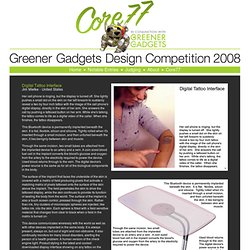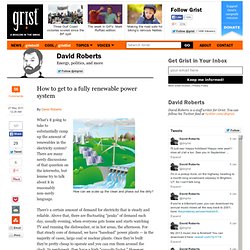

Oxijet air shower reduces water use by 50 percent. Low-flow shower heads are a good way to save water, but using one can be a bit like showering with a spray bottle.

New Zealand company Felton, in collaboration with Australia's Commonwealth Scientific and Industrial Research Organisation (CSIRO), has developed the Oxijet – an “air shower” head that injects tiny air bubbles into the water droplets to make the shower feel like it’s at full pressure, yet while using 50 percent less water. "Traditional flow restrictors reduce flow and pressure, whereas Oxijet uses the flow energy to draw air into the water stream, making the water droplets hollow," Dr.
Jie Wu, a fluids specialist at CSIRO said. "This expands the volume of the shower stream, meaning you can save the same amount of water, while still enjoying your shower. " There are other air shower systems, but the Oxijet is unusual in that it can be fitted to almost any standard shower fitting. The video below shows the Oxijet in action. Source: CSIRO About the Author. Jim Mielke - Core77's Greener Gadgets Design Competition 2008. Digital Tattoo Interface Jim Mielke - United States Her cell phone is ringing, but the display is turned off.

She lightly pushes a small dot on the skin on her left forearm to suddenly reveal a two by four inch tattoo with the image of the cell phone's digital display, directly in the skin of her arm. She answers the call by pushing a tattooed button on her arm. While she's talking, the tattoo comes to life as a digital video of the caller. This Bluetooth device is permanently implanted beneath the skin. Through the same incision, two small tubes are attached from the implanted device to an artery and a vein. The surface of the implant that faces the underside of the skin is covered with a matrix of field producing pixels that activate a matching matrix of pixels tattooed onto the surface of the skin above the implant.
This device communicates wirelessly with the world as well as with other devices implanted in the same body. Green Packaging: 5 Ways to Green Your Product Packaging. Disposed packaging material is one of the leading causes of soil pollution.

Vast landfills are required to accommodate the millions of tons of packaging material disposed every year. Eco packaging promises to change all this. What is Green Packaging? Green packaging is not just about reducing the amount of packaging but takes package design, processing, disposal conditions and the entire product lifecycle into consideration. Some of characteristics of sustainable packaging include: Minimizing the amount of packaging used (weight and volume)Minimizing the energy used for production and transportation of goodsUsing packaging that can be reused again, such as bottles and refillable ink cartridgesUsing recycled and recyclable materialsUsing biodegradable materials Businesses are investing in green packaging because consumer research has shown that consumers value sustainable packaging provided that other aspects of packaging like functionality are met. The Cradle to Cradle Approach.
Greening the Biggest Machine on the Planet - Climate Desk. How to get to a fully renewable power system. How can we scale up the clean and phase out the dirty?

What’s it going to take to substantially ramp up the amount of renewables in the electricity system? There are many nerdy discussions of that question on the interwebs, but lemme try to talk about it in reasonably non-nerdy language. There’s a certain amount of demand for electricity that is steady and reliable. Above that, there are fluctuating “peaks” of demand each day, usually evening, when everyone gets home and starts watching TV and running the dishwasher, or in hot areas, the afternoon. For that steady core of demand, we have “baseload” power plants — in the majority of cases, large coal or nuclear plants. So you’ve got your baseload plants and your peaker plants.
In the U.S., already so resistant to change, the reaction has been to say, “Bummer, renewables can’t do much, woulda been nice.” So, how would one go about solving the problem? Perhaps charts will help! Sorry for the German — I couldn’t find an English version.